One of my top priorities for 2015 was to have a garden grown as a nature reserve, making sure there is lots on offer for nectar loving insects like bees. Bees and other pollinators will visit lots of flowers, but some they will go crazy for. Below I’ve listed the flowers in our garden not just visited by bees, but swarmed by them.
1) Cyclamen persicum
I actually removed these plants this summer but will definitely replace them soon. They are unique because they flower from autumn, all through winter into mid-spring if deadheaded regularly. The bees swarm them on warm days.
I highly recommend them as a plant. Lovely leaves and flowers. Look amazing all through winter. Have a lovely scent. And feed bees and other insects right the way through the toughest season for them.
2) Salvia ‘Amistad’
Strangely, the bees ignored this one all summer despite it being in flower. Then in autumn, zammo, they were all over it! I guess they were running out of other sources of nectar and went for this one. Or a particular type of bee had missed this plant until this time.
3) Allium sphaerocephallon
Alliums don’t flower for very long, but when they do, bees love them. Allium sphaerocephallon is one of my favourites because of the rich colour and because it seems to last a bit longer than other alliums, and flowers later in July. Compared to other Alliums, it was this one that attracted the full swarm en masse.
4) Hellebores
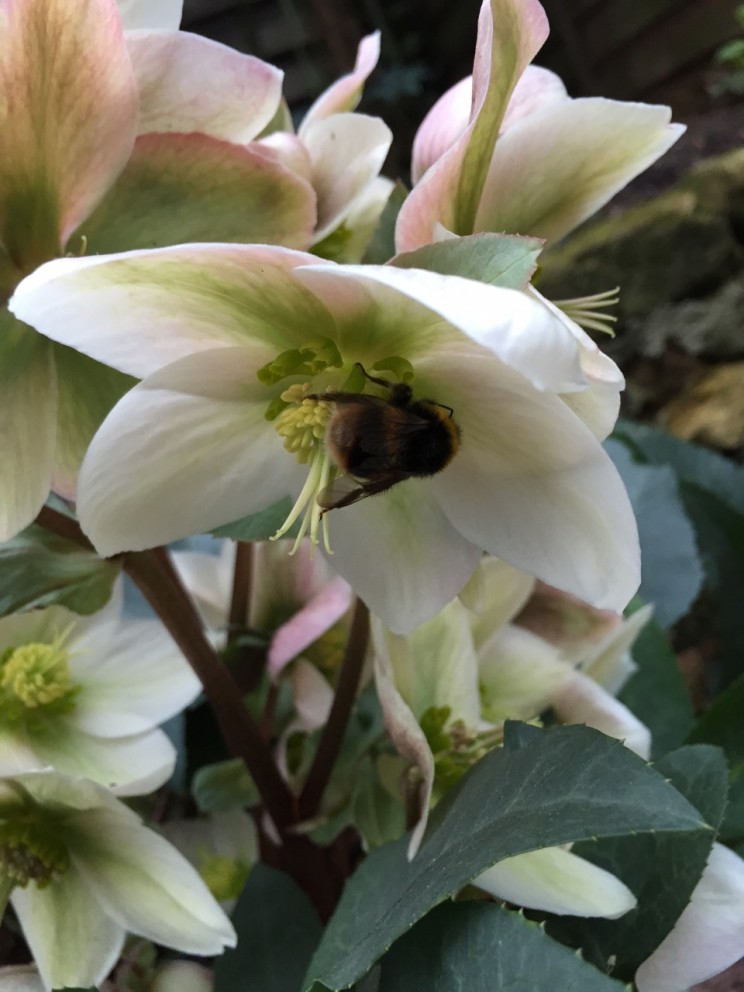
This one is Helleborus x hybridus ‘Ivory Prince’ and is a bee magnet at the start of the year when there are slim pickings on the nectar front. All Hellebores seem to be as attractive as the next.
5) Allium ‘White Giant’
Flowering earlier in the year, the bees weren’t swarming on the larger Alliums. However, they certainly did visit them regularly. They look like little planets with the bees on them 🙂
6) Heuchera ‘Marmalade’
We have a few Heucheras but only this one seems to do it for the bees. The flowers are profuse and last for quite a while, offering a good food source in spring (for this particular Heuchera).
For 2016 I will be expanding the number of insect friendly flowers but at least with this set, I can guarantee a supply of nectar across the full 12 months of the year.
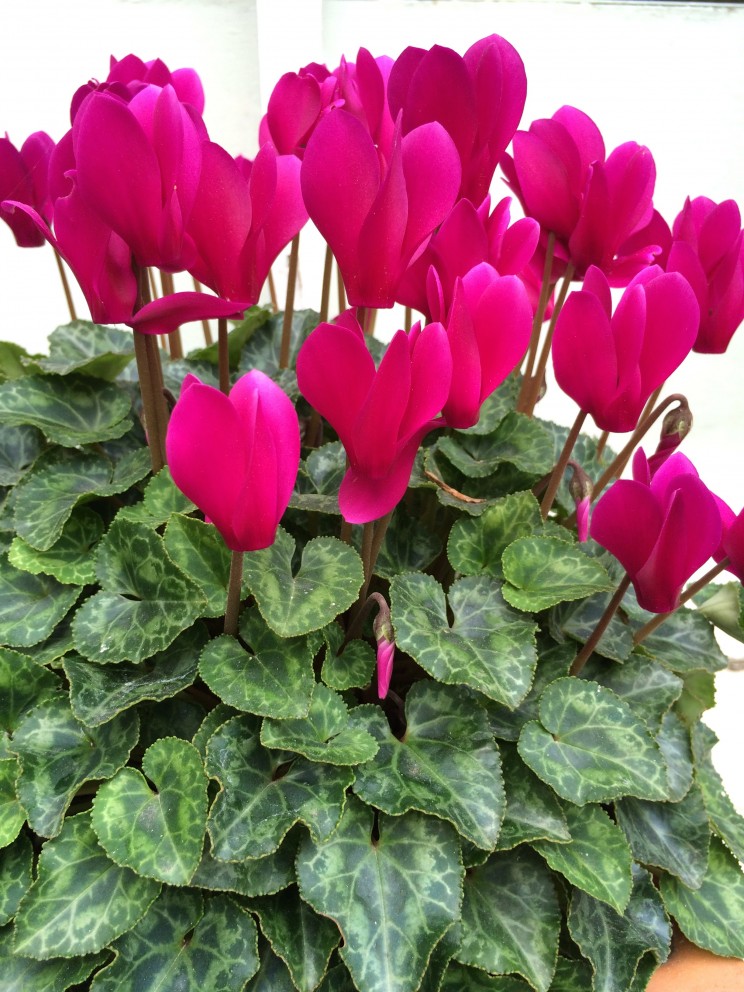
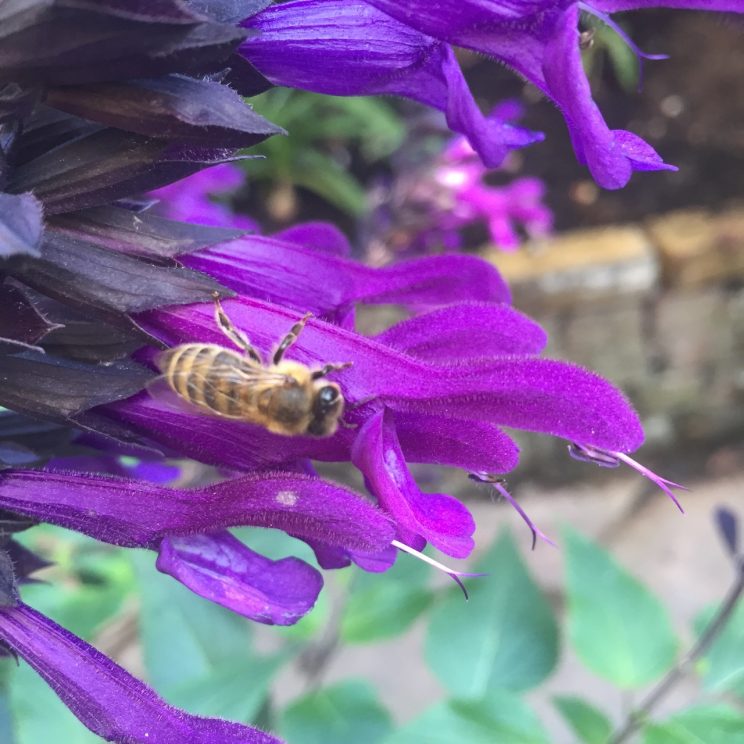
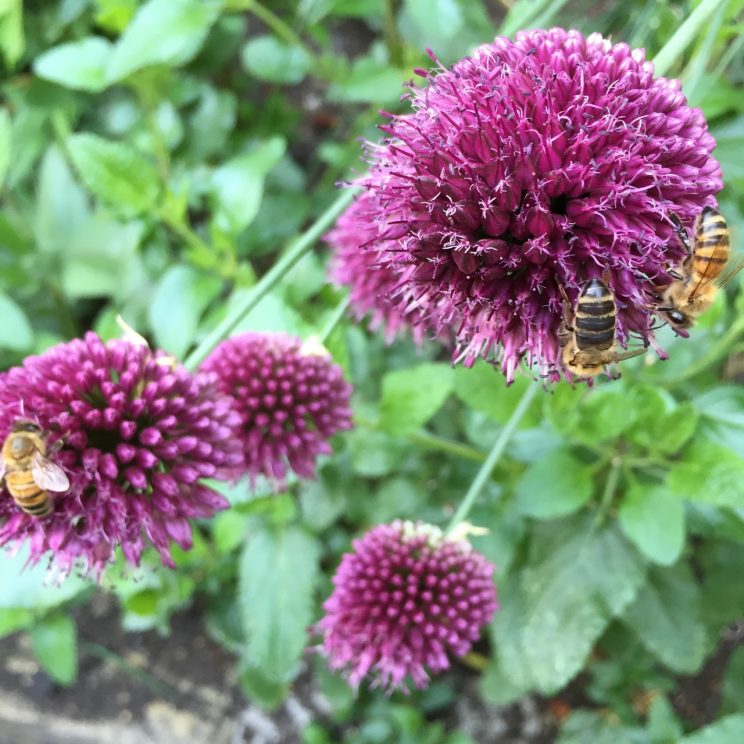
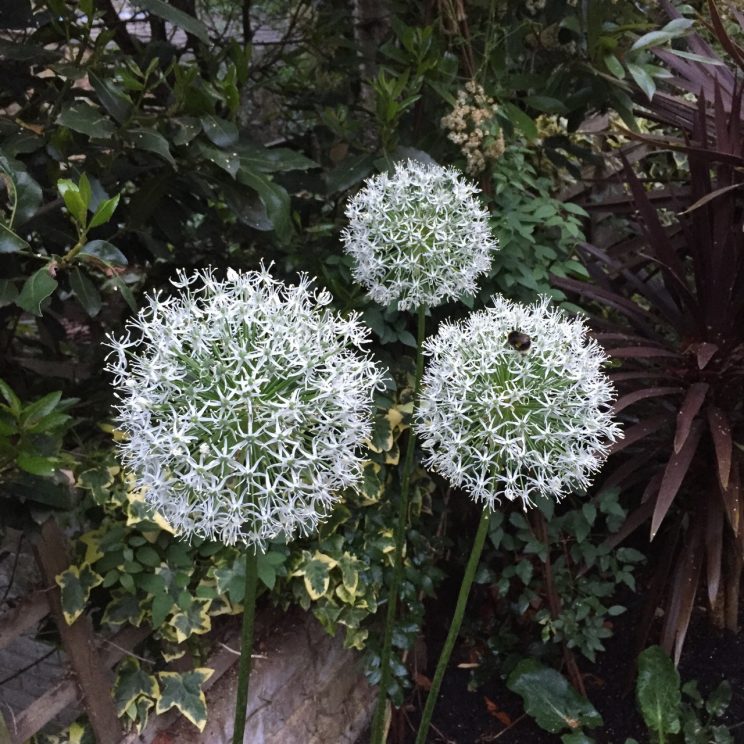
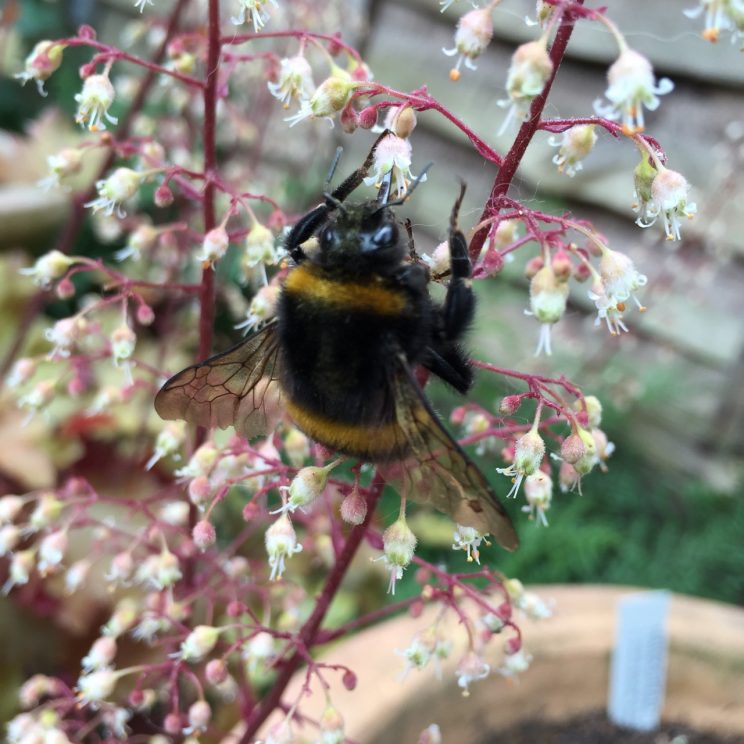
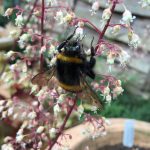
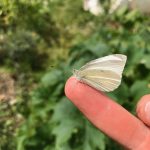
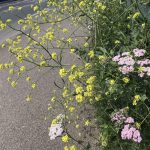
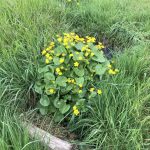
Hi Jack, would you recommend any of these for a balcony? I want to encourage the bees but don’t want to be swarmed by then while I’m having a barbie or a vino on the balcony and enjoying the sun.
Hi Miss K, yes definitely. The Cyclamen will be fine on there. Alliums and Salvias too if it’s not to windy.
Valerian is another excellent one, and can be mistreated and shoved in a tiny pot so takes up little room. Verbena bolarensis is also great for Bees, and, weirdly enough, ivy later in the year.
The best thing you can do is build a pond, however small. Try looking up farm drinking troughs from agricultural suppliers, they look great as raised ponds in urban gardens.
I am an ecologist by education and training and the misconception is that you should plant a tree for wildlife when in fact a pond is usually much more valuable, particularly in London.
Just make sure you have some way for animals to get out.
Lythria salicaria (purple loosestrife) is a great one for ponds, and Bees love it. Also water mint, which makes a nice addition to lemonade (tastes a little different to regular mint.)
Oooh thanks for the tips! This is so valuable 🙂 Do the bees drink out of ponds?
I have to say, I am extremely taken with Lythrum so thank you for that tip, I hadn’t heard of it before. I do have a small pond in a pot 😀 it has a dwarf waterlily, an iris and a… something I can’t remember the name of but looks like mini papyrus. If I can squeeze in a purple Lythrum though I certainly will.
We have quite a lot of ivy growing around our fences. I really like it and in the summer, you can grow things like Clematis through it or in front of it offering a lovely evergreen backdrop. Some double bonus with the bees too!
The pond is not so much for the bees as for other things like dragonfly, mayfly etc. Many insects have an aquatic stage to their life cycle. Plus of course birds will drink (and foxes too sometimes). As I mentioned, just make sure you have some way for animals to get out. On the farm I grew up on we used to find the odd dead owl chick in a water trough until we put some bricks at one end that emerged from the water.
Lythrum is a great native plant, and can be gotten free by checking your local pond or steam. Recognise it by its leaf arrangement.
It is LOVED by bees but is vigorous, so prune well in winter.
Other good native aquatics include water forget me not, brookelime, Marsh marigold (needs a generous space), gypsywort (less elegant, but gives a less formal look), yellow flag iris (flowers for a depressingly short time) and water mint.
As with all aquatic or semi aquatic plants they root really easily (an adaptation to flooding) so just rip off some root and stem and go for it.
One thing though; ALWAYS thoroughly rinse aquatic plants into a drain before planting (even those from garden centres) as this prevents the spread of highly invasive non native species. There are some devastating non native species that are causing havoc in our waterways, and the smallest bit of leaf is often enough for them to get established.
I love ponds in gardens and they are great ways to get kids interested. If you’re worried about kids and ponds then go for a raised pond and put a steel mesh half an inch under the water, or just keep it super shallow. Shallow ponds are still valuable, even if they dry out occasionally.
Oh, BTW, lythrum doesn’t have to be in water, it’s more of an emergent plant and loves to have its feet wet, so will go great in a pot with no drainage holes.
That’s also how I grow my water mint.
I might try some in a separate pot in that case, that’s quite handy.
I don’t think we’ll get frogs in ours for various reasons but you never know about dragonflies 🙂
I’ll think more about the pond’s escape routes. It does have staged planting which might be OK, I just need to make it securer so any stray birds that do get stuck don’t tip them over.